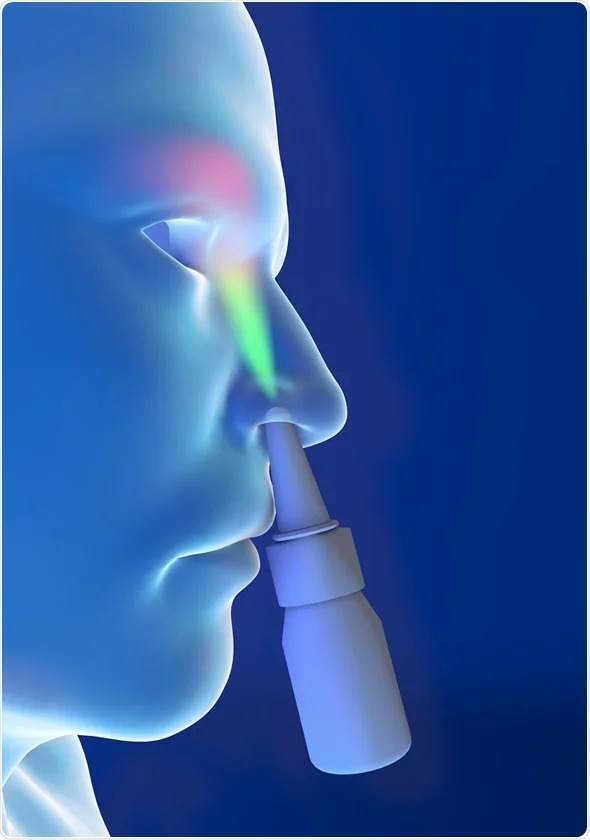What is the correct way to use nasal spray?
What is Nasal Spray?
Liquid medications that you spray into your nose are called nasal sprays. They are employed to aid in the relief of nasal congestion (stuffiness). Congestion is frequently a sign of a cold or allergy symptoms.
Depending on the type of nasal spray being used, nasal sprays can effectively treat the symptoms of allergies or other disorders when used properly. However, it’s critical that patients understand how to properly use the spray. This aids in boosting the drug’s effectiveness and lowering the possibility of nasal spray adverse effects.
Working and use of Nasal spray
Nasal sprays target inflammation in your nasal passages, which lessens swelling and aids in clearing out stuffiness, to put it simply.

Some nasal sprays, including steroid and antihistamine sprays, are intended specifically to relieve allergy symptoms and can be applied repeatedly.
Decongestant nasal sprays, a third kind, are best for relieving congestion brought on by the flu or a cold because they should only be used for a few days at a time.
Side effects of Nasal Spray
Some of the common side effects observed while using nasal spray includes:
- a burning or stinging feeling in the nose.
- nasal dryness and crustiness.
- a scratchy, dry throat.
- mouthfeel that is unpleasant.
- In the nose, there is itching, redness, and swelling.
- nosebleeds.
How to use Nasal Spray?
There are both over-the-counter and prescription nasal sprays. They also come in pressurised canisters and pump bottles, two different kinds of containers.
Procedures for utilising a pressurised canister
- Blow your nose gently to remove any mucus before taking the medication.
- Ensure that the canister is securely fastened in the holder. Just before using the canister, give it a few good shakes.
- Maintain a straight back. Exhale gradually.
- With one hand, hold the nasal spray container. Aiming the canister tip toward the back of your head, insert it into your nostril. Close the nostril on the side not getting the medication with a finger.
- As you start to inhale slowly through your nose, press down on the canister. For the opposite nostril, repeat same procedures. Repeat all of these instructions if you’re using more than one spray in each nostril.
- Avoid blowing your nose or sneezing right after applying the spray.
How to use a pump bottle.
- Blow your nose gently to remove any mucus before taking the medication.
- Take off the cap. Shake the container. You might need to “prime” the pump spray each time you use it for the first time. To accomplish this, spray the liquid several times into the air until a fine mist appears.
- Lean your head slightly forward. Exhale gradually.
- Your thumb should be near the bottom of the pump bottle, and your index and middle fingers should be on top. Aiming the canister tip toward the back of your head, insert the tip into your nostril. Your other hand’s finger can be used to cover the nostril on the side not receiving the medication.
- As you start to take slow, deep breaths in through your nose, squeeze the pump. For the opposite nostril, repeat same procedures. Repeat all of these instructions if you’re using more than one spray in each nostril.
- Avoid blowing your nose or sneezing right after applying the spray.
General mistakes
When using nasal sprays, there are numerous mistakes that are frequently committed that increase the risk of side effects or reduce their effectiveness.
Due to the medication’s focus on this delicate region of the nasal airways, nasal inflammation of the septum (the middle segment of the nose) is a frequent adverse effect. This can be prevented by spraying the other nostril with the opposite hand, such as from the left to the right or vice versa, so that the spray is directed at the outside of the nose.
Another frequent adverse effect is mild throat irritation, which can be brought on by the drug dribbling down the back of the throat due to poor head positioning or breathing in too quickly when administering the medication (snorting the medication). This can be prevented by maintaining a small forward tilt of the head while administering the spray and taking slow, deep breaths.
Finally, using nasal sprays can occasionally cause nosebleeds or severe nasal discomfort. Patients should use a saline spray for the next 1-2 days in this situation to allow the nasal lining to heal and stop using the spray for this reason.
Things to consider
Nasal sprays contain a variety of medications. If taken for an extended period of time, some of these medications can harm the lining of your nose. Additionally, continued use may cause your nose to cease reacting to the spray. You might need to apply more spray as a result to achieve the same results. If this occurs, consult your doctor. He or she might be able to make a suggestion that will be more practical for you.
There are certain nasal sprays with time restrictions. The duration of your spray’s use can be determined by your doctor.
REFERENCES:
- https://health.clevelandclinic.org/how-to-use-nasal-spray/
- https://familydoctor.org/nasal-sprays-how-to-use-them-correctly/
- https://www.news-medical.net/health/How-to-Use-Nasal-Sprays-Correctly.aspx
For more details, kindly visit below.